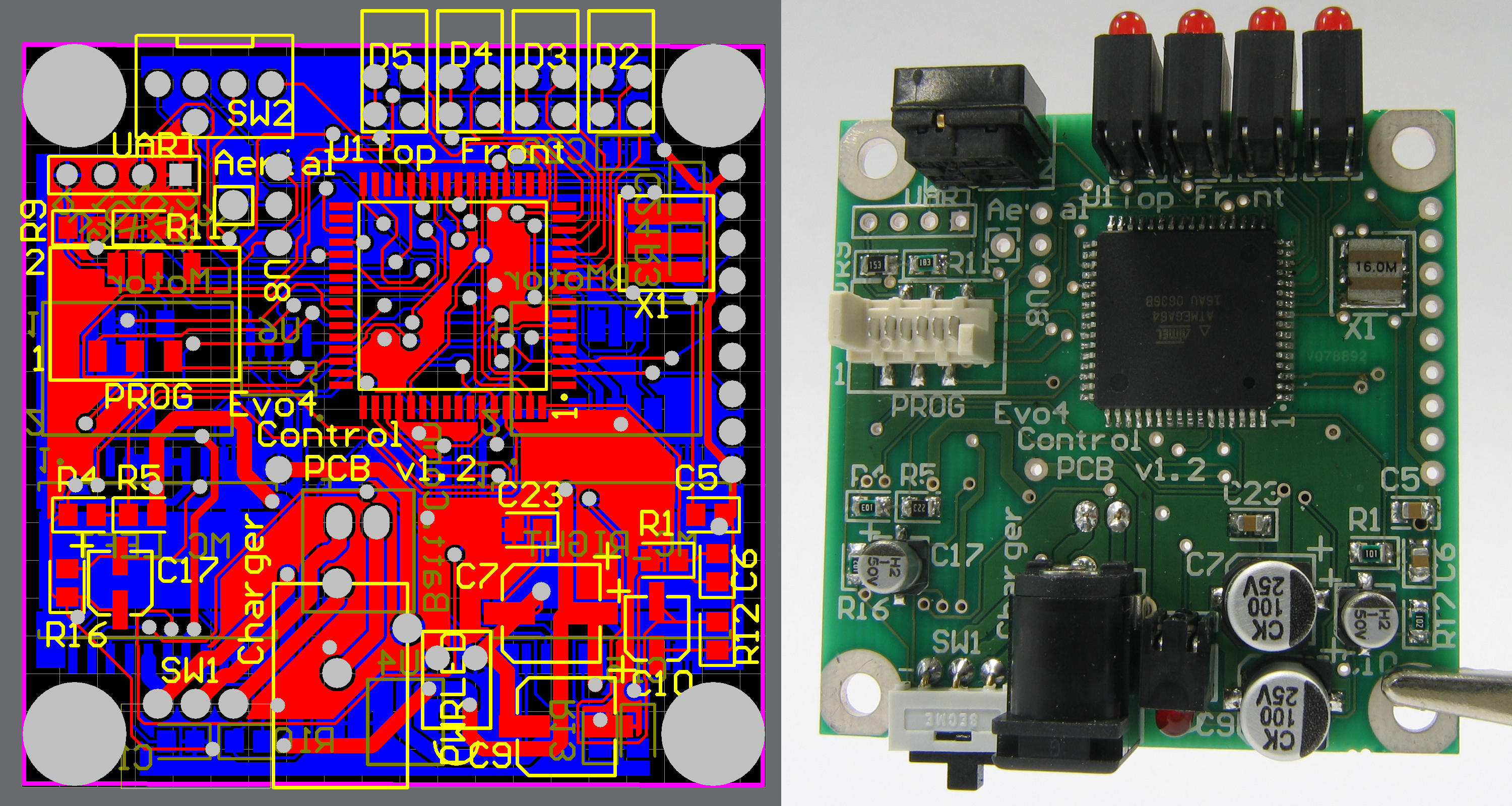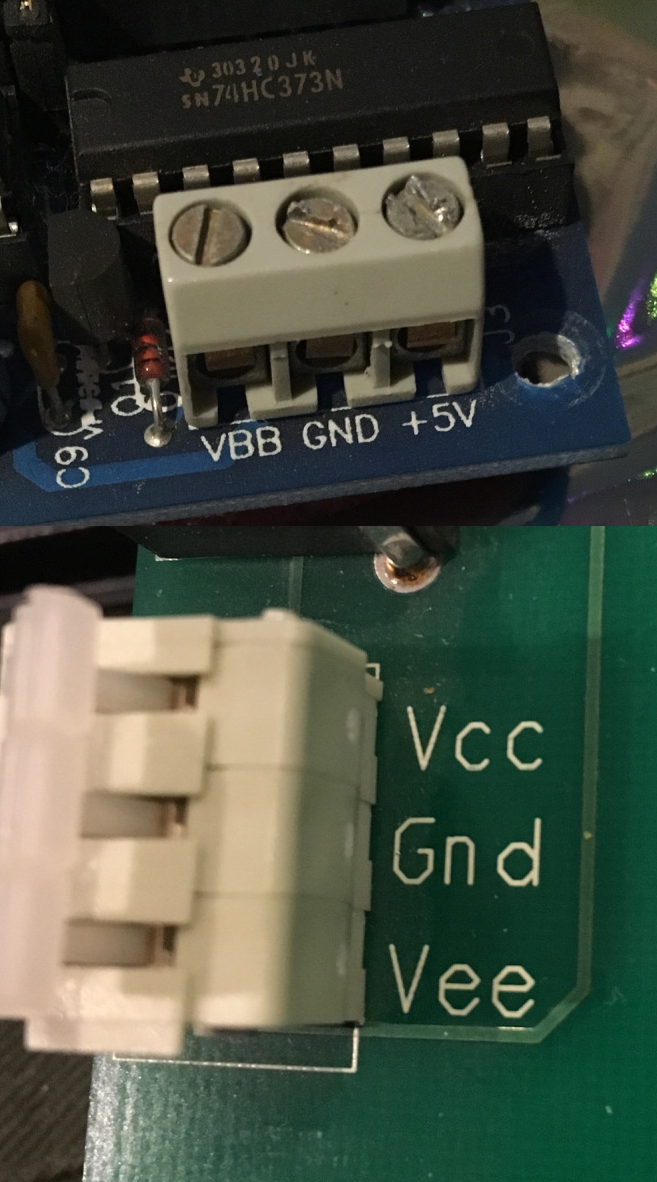|
Channel Router
A channel router is a specific variety of router for integrated circuits. Normally using two layers of interconnect, it must connect the specified pins on the top and bottom of the channel. Specified nets must also be brought out to the left and right of the channel, but may be brought out in any order. The height of the channel is not specified - the router computes what height is needed. The ''density'' of a channel, defined for every ''x'' within the channel, is the number of nets that appear on both the left and right of a vertical line at that ''x''. The maximum density is a lower bound on the height of the channel. A "cyclic constraint" occurs when two pins occur in the same column (but with different orders) in at least two columns. In the example shown, nets 1 and 3 suffer from cyclic constraints. This can only be solved by "doglegs" as shown on net 1 of the example. Channel routers were one of the first forms of routers for integrated circuits, and were heavily ... [...More Info...] [...Related Items...] OR: [Wikipedia] [Google] [Baidu] |
Routing (EDA)
In electronic design, wire routing, commonly called simply routing, is a step in the design of printed circuit boards (PCBs) and integrated circuits (ICs). It builds on a preceding step, called placement, which determines the location of each active element of an IC or component on a PCB. After placement, the routing step adds wires needed to properly connect the placed components while obeying all design rules for the IC. Together, the placement and routing steps of IC design are known as place and route. The task of all routers is the same. They are given some pre-existing polygons consisting of pins (also called terminals) on cells, and optionally some pre-existing wiring called preroutes. Each of these polygons are associated with a net, usually by name or number. The primary task of the router is to create geometries such that all terminals assigned to the same net are connected, no terminals assigned to different nets are connected, and all design rules are obeyed. A rou ... [...More Info...] [...Related Items...] OR: [Wikipedia] [Google] [Baidu] |
Interconnection
In telecommunications, interconnection is the physical linking of a carrier's network with equipment or facilities not belonging to that network. The term may refer to a connection between a carrier's facilities and the equipment belonging to its customer, or to a connection between two or more carriers. In United States regulatory law, interconnection is specifically defined (47 C.F.R. 51.5) as "the linking of two or more networks for the mutual exchange of traffic." One of the primary tools used by regulators to introduce competition in telecommunications markets has been to impose interconnection requirements on dominant carriers. History United States Under the Bell System monopoly (post Communications Act of 1934), the Bell System owned the phones and did not allow interconnection, either of separate phones (or other terminal equipment) or of other networks; a popular saying was "Ma Bell has you by the calls". This began to change in the landmark case Hush-A-Phone ... [...More Info...] [...Related Items...] OR: [Wikipedia] [Google] [Baidu] |
IC Power-supply Pin
IC power-supply pins denote a voltage and current supply terminals in electric, electronics engineering, and in Integrated circuit design. Integrated circuits (ICs) have at least two pins that connect to the power rails of the circuit in which they are installed. These are known as the power-supply pins. However, the labeling of the pins varies by IC family and manufacturer. The double subscript notation usually corresponds to a first letter in a given IC family (transistors) notation of the terminals (e.g. VDD supply for a drain terminal in FETs etc.). The simplest labels are V+ and V−, but internal design and historical traditions have led to a variety of other labels being used. V+ and V− may also refer to the non-inverting (+) and inverting (−) voltage inputs of ICs like op amps. For power supplies, sometimes one of the supply rails is referred to as ground (abbreviated "GND") positive and negative voltages are relative to the ground. In digital electronics, negativ ... [...More Info...] [...Related Items...] OR: [Wikipedia] [Google] [Baidu] |
Net (electronics)
In electronic design, a netlist is a description of the connectivity of an electronic circuit. In its simplest form, a netlist consists of a list of the electronic components in a circuit and a list of the node (circuits), nodes they are connected to. A network (net) is a collection of two or more interconnected components. The structure, complexity and representation of netlists can vary considerably, but the fundamental purpose of every netlist is to convey Graph_(abstract_data_type), connectivity information. Netlists usually provide nothing more than instances, nodes, and perhaps some attributes of the components involved. If they express much more than this, they are usually considered to be a hardware description language such as Verilog or VHDL, or one of several languages specifically designed for input to simulators or hardware compilers (such as SPICE analog simulation netlists). Types of netlists Netlists can be: * Physical (based upon physical connections) or logica ... [...More Info...] [...Related Items...] OR: [Wikipedia] [Google] [Baidu] |
Density
Density (volumetric mass density or specific mass) is the substance's mass per unit of volume. The symbol most often used for density is ''ρ'' (the lower case Greek letter rho), although the Latin letter ''D'' can also be used. Mathematically, density is defined as mass divided by volume: : \rho = \frac where ''ρ'' is the density, ''m'' is the mass, and ''V'' is the volume. In some cases (for instance, in the United States oil and gas industry), density is loosely defined as its weight per unit volume, although this is scientifically inaccurate – this quantity is more specifically called specific weight. For a pure substance the density has the same numerical value as its mass concentration. Different materials usually have different densities, and density may be relevant to buoyancy, purity and packaging. Osmium and iridium are the densest known elements at standard conditions for temperature and pressure. To simplify comparisons of density across different s ... [...More Info...] [...Related Items...] OR: [Wikipedia] [Google] [Baidu] |
Pin (electronics)
In electronics, a lead () is an electrical connection consisting of a length of wire or a metal pad (surface-mount technology) that is designed to connect two locations electrically. Leads are used for many purposes, including: transfer of power; testing of an electrical circuit to see if it is working, using a test light or a multimeter; transmitting information, as when the leads from an electrocardiograph are attached to a person's body to transmit information about their heart rhythm; and sometimes to act as a heatsink. The tiny leads coming off through-hole electronic components are also often called ''pins''; in ball grid array packages, they are in form of small spheres, and are therefore called "balls". Many electrical components such as capacitors, resistors, and inductors have only two leads, while some integrated circuits can have several hundred or even more than a thousand for the largest ball grid array packages. Integrated circuit pins often either bend under the ... [...More Info...] [...Related Items...] OR: [Wikipedia] [Google] [Baidu] |
Integrated Circuits
An integrated circuit or monolithic integrated circuit (also referred to as an IC, a chip, or a microchip) is a set of electronic circuits on one small flat piece (or "chip") of semiconductor material, usually silicon. Large numbers of tiny MOSFETs (metal–oxide–semiconductor field-effect transistors) integrate into a small chip. This results in circuits that are orders of magnitude smaller, faster, and less expensive than those constructed of discrete electronic components. The IC's mass production capability, reliability, and building-block approach to integrated circuit design has ensured the rapid adoption of standardized ICs in place of designs using discrete transistors. ICs are now used in virtually all electronic equipment and have revolutionized the world of electronics. Computers, mobile phones and other home appliances are now inextricable parts of the structure of modern societies, made possible by the small size and low cost of ICs such as modern compute ... [...More Info...] [...Related Items...] OR: [Wikipedia] [Google] [Baidu] |
Computer Chip
An integrated circuit or monolithic integrated circuit (also referred to as an IC, a chip, or a microchip) is a set of electronic circuits on one small flat piece (or "chip") of semiconductor material, usually silicon. Large numbers of tiny MOSFETs (metal–oxide–semiconductor field-effect transistors) integrate into a small chip. This results in circuits that are orders of magnitude smaller, faster, and less expensive than those constructed of discrete electronic components. The IC's mass production capability, reliability, and building-block approach to integrated circuit design has ensured the rapid adoption of standardized ICs in place of designs using discrete transistors. ICs are now used in virtually all electronic equipment and have revolutionized the world of electronics. Computers, mobile phones and other home appliances are now inextricable parts of the structure of modern societies, made possible by the small size and low cost of ICs such as modern computer ... [...More Info...] [...Related Items...] OR: [Wikipedia] [Google] [Baidu] |
Area Router
Area is the quantity that expresses the extent of a region on the plane or on a curved surface. The area of a plane region or ''plane area'' refers to the area of a shape or planar lamina, while ''surface area'' refers to the area of an open surface or the boundary of a three-dimensional object. Area can be understood as the amount of material with a given thickness that would be necessary to fashion a model of the shape, or the amount of paint necessary to cover the surface with a single coat. It is the two-dimensional analogue of the length of a curve (a one-dimensional concept) or the volume of a solid (a three-dimensional concept). The area of a shape can be measured by comparing the shape to squares of a fixed size. In the International System of Units (SI), the standard unit of area is the square metre (written as m2), which is the area of a square whose sides are one metre long. A shape with an area of three square metres would have the same area as three such squares. ... [...More Info...] [...Related Items...] OR: [Wikipedia] [Google] [Baidu] |
Digital Electronics
Digital electronics is a field of electronics involving the study of digital signals and the engineering of devices that use or produce them. This is in contrast to analog electronics and analog signals. Digital electronic circuits are usually made from large assemblies of logic gates, often packaged in integrated circuits. Complex devices may have simple electronic representations of Boolean logic functions. History The binary number system was refined by Gottfried Wilhelm Leibniz (published in 1705) and he also established that by using the binary system, the principles of arithmetic and logic could be joined. Digital logic as we know it was the brain-child of George Boole in the mid 19th century. In an 1886 letter, Charles Sanders Peirce described how logical operations could be carried out by electrical switching circuits.Peirce, C. S., "Letter, Peirce to A. Marquand", dated 1886, '' Writings of Charles S. Peirce'', v. 5, 1993, pp. 541–3. GooglPreview See Burks, ... [...More Info...] [...Related Items...] OR: [Wikipedia] [Google] [Baidu] |


.jpg)